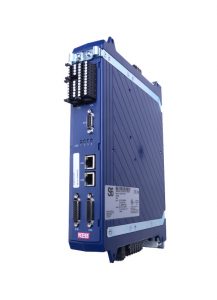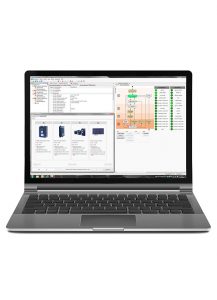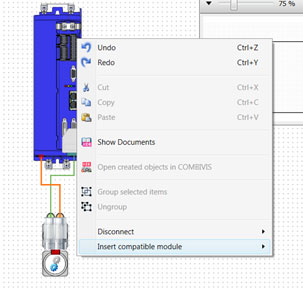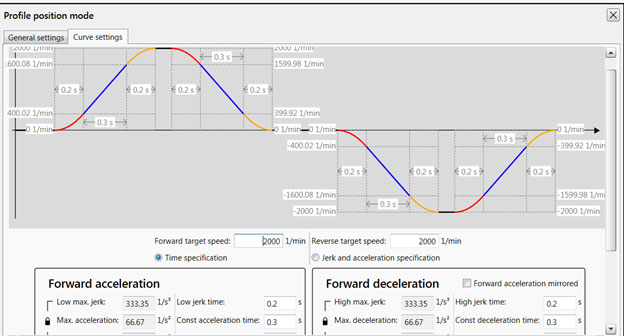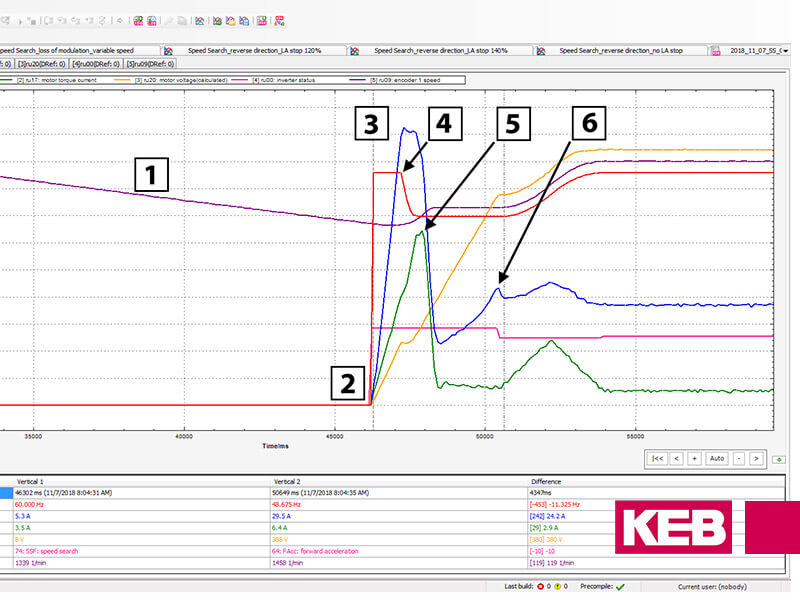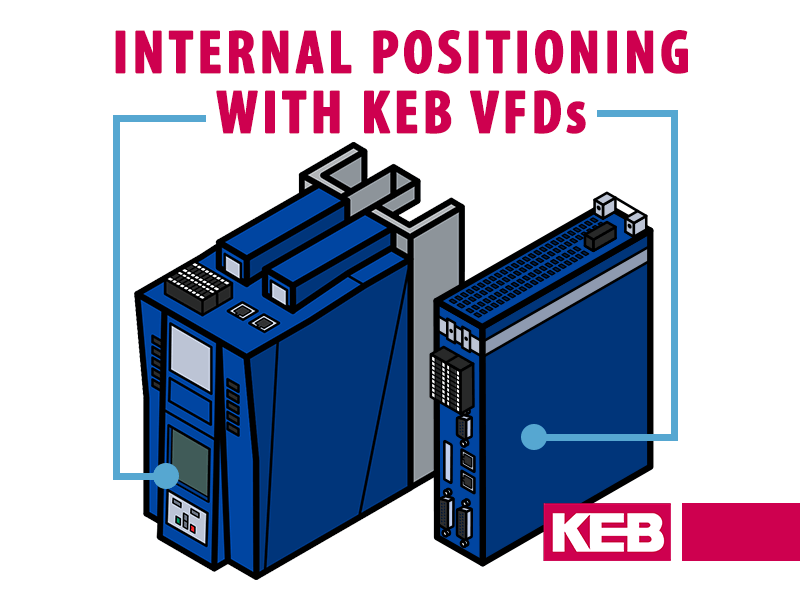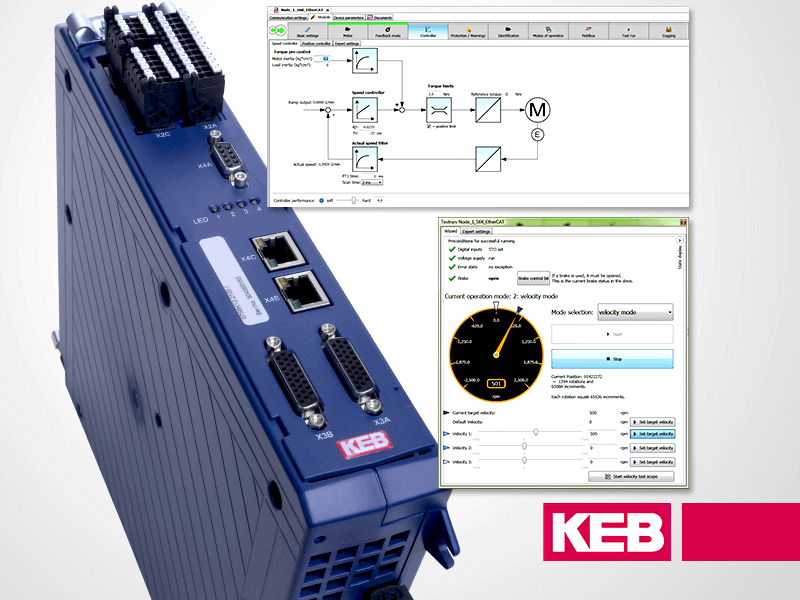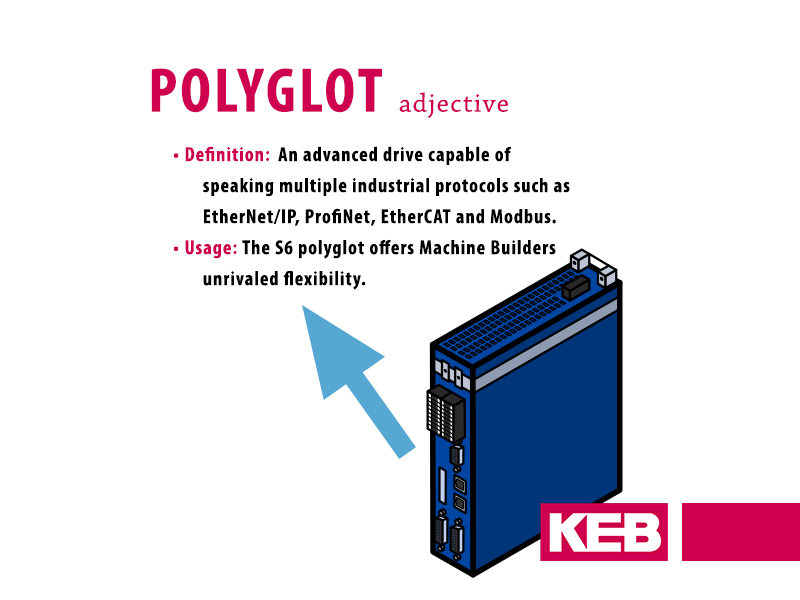Lenze 940 Series Replacement Using a KEB S6 Servo Drive
It can be frustrating when a component manufacturer discontinues a product, but product discontinuation is a necessary evil. Some common reasons for discontinuing a product are the product is replaced by new technologies and inability to get parts to produce the product. When you have machines in the field with a discontinued product on them, they can be a big headache to support. Fortunately, at KEB, we help our current OEM customers plan for product discontinuation far in advance so they are able to support their machines adequately. We have also been able to gain new OEM customers by helping them replace our competitors’ discontinued products.
Servo Systems
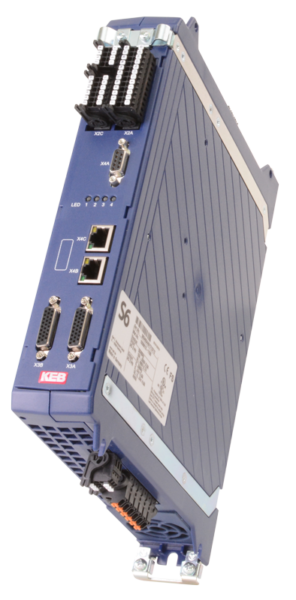
Most engineers that deal with industrial motors can agree that AC servo motors are typically the superior choice over induction when you have an application that demands high-speed, precise movements. What is less known is how much the VFD controlling the motor affects the performance and lifetime of the motor. Most servo drives are able to get the rated torque out of the motor, but they may sacrifice position accuracy and will overshoot positions slightly and need to correct or have dated homing routines.
At KEB, our standard fast, high cycle product package is our S6 paired with one of our TA servo motors, controlled by our combination HMI/PLC (HMI-LC) product. This system communicates using EtherCAT which cuts the position command cycle time to under 100 microseconds. If positions need to be updated even faster than this allows, there is a positioning module within KEB’s servo drives that can store up to 32 positions that can be programmed to start immediately after the previous position is met, with a delay, or with a digital input.
Case: Replacing a Lenze PositionServo 940 Series Drive
In a recent project, we replaced a Lenze 940 servo system. The application was a fly knife cutter which had 2 blades on a rotary axis. On their previous builds with Lenze components, they used a servo motor with resolver, a limit switch for a home sensor, and a series 940 inverter. We were able to offer a comparable inverter/motor pair and the customer decided to use all KEB components on the automation side of this iteration of their machine. Because of this, we were able to utilize many of software tools that come with our Generation 6 products.
Any good design starts with selecting the best components for the job. KEB has put a lot of time creating tools that allow our customers to design their systems using our whole product arsenal. For this project, we used the Configuration tool to start with a 2.2kW servomotor. From there, we used the “insert compatible module” dropdown to populate everything (cables, encoders, etc…) all the way up to the inverter.
Once complete, the user can export the configuration, and the software produces a BOM for all components. This example was only one axis without a PLC, but this tool is especially useful for multi axis systems to keep all of the components organized and accounted for.
Programming and Start-up
We were able to utilize some of the many on-board features of the S6 for this project (universal encoder interface, brake control output, STO, 3/8 digital inputs, etc.) but the most useful feature for setup was in the software. This application required aggressive acceleration and deceleration ramps to get up to the necessary cutting speed and quickly decelerate so it does not overshoot the half rotation point. These ramps can be confusing when looked at in parameter form, so we used our profile position mode wizard to create the move profiles.
There are several other wizards in the software that we used to help set up the encoder, perform the motor learn, and add protective error functions.
Another helpful wizard that we used in this conversion was the homing mode wizard. We were able to set the acceleration, maximum speed, and select a digital input for the home switch all on the same screen. We chose our push-button homing procedure for this particular fly knife application. A rough sketch is shown below:
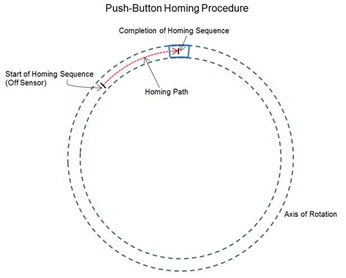
There are sixteen homing methods that are usable within the S6 software. This particular method started on the current position and would search until it found the sensor which would trigger a “homed” light once found. This was a big improvement from their old homing method with the 940 series inverter which required the operator to reach in and manually move the blade to get it “homed.” This is very unsafe when dealing with knives and the compromise to an inferior homing method could have proved very costly.
If your old component supplier has discontinued a product that is used on your machine, we would be happy to replace it (or the whole system) with a KEB solution. Along with the hardware, you will receive tools and support that will help ensure your machine is running at its best.
Let's Work Together
Connect with us today to learn more about our industrial automation solutions—and how to commission them for your application.
